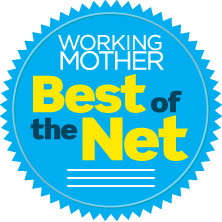Bilingualism helps sharpen the mind, makes you more creative, increases mental flexibility, facilitates travel, helps you make friends, and is really cool to boot.
So, how to help your children along the path–especially if you live in the United States, a country that, despite its large immigrant population, is still decidedly monolingual?
The Bilingual Edge is essential reading for any parent who hopes to give their child the gift of proficiency or fluency in another language. By walking you through the why, when, and how if teaching your child a second language, the Bilingual Edge helps you develop a plan for a bilingual learning environment that works for you family.
The Challenges of Raising a Bilingual Child
The prospect of raising a bilingual child can be a little intimidating. Despite a great effort to clearly present research findings and reassure parents that bilingualism or even multilingualism is an attainable goal–even if the parents themselves are monolinguals–the book sets the bar fairly high and debunks the too-good-to-be-true easy edutainment options.
First, although having your four year old count to ten in five languages is a neat trick at parties, it really is not going to give her “the bilingual edge.” In other words, exposure to another language is certainly fun and can’t hurt, but your child needs to be conversant in another language to truly reap the intellectual and social advantages.
Second, those DVDs are sure easy to pop in…but they may not be the most appropriate way to introduce your infant to another language. Don’t ditch Dora quite yet, however: pre-school and school aged children may benefit from watching and discussing television shows and DVDs with adults and other children.
Plentiful Resources Make Learning Another Language Fun
Fortunately, there are plenty of resources for parents who want their children to learn another language.
Other media can also promote language learning. Whether you use DVDs (after 2 years’ old), CDs, computer programs, books, or toys, the key is to employ them as a springboard, rather than a substitute for language-based interaction with your child.
The authors recommend seeking out:
- Native speakers as caretakers
- Local activities and groups in the target language
- Books in the target language
- CDs, toys and other media you can explore with your child
Opportunities for Interaction: According to the book, the best way to gain fluency in another language is to seek out enjoyable activities and chances for your child to interact with others in that language. The authors list websites for locating heritage schools and provide suggestions for finding other area resources.
Children’s Books: In addition to fun and meaningful opportunities to socialize in the target language, the authors emphasize the importance of literacy in a foreign language. The Internet makes it easy to find books in other languages. Try Children’s Books in Foreign Languages on Amazon.com. You can also browse by language, then select “children’s books.”
There are plenty of children’s books available in other languages, and most of the baby board book classics, such as Buena Noches Luna (Good Night Moon) or La oruga muy hambrienta (The Very Hungry Caterpillar), are available in Spanish. You may have difficulty locating board books in other languages, but options are out there, such as Where’s the Kitten? (English/Russian bilingual edition), which is fast becoming a favorite in our house.
Audio CDs: Fun CDs, such as Baby’s First Words and Baby’s First Steps can help familiarize your baby with the sounds of a foreign language.
Toys: There are also fun toys available in other languages, such as the Puppy and Home Phone available in Spanish from Laugh & Learn (click here and search for “Spanish” toys) and Language Littles Dolls Shop in Spanish, French, Russian, German, Japanese, Hebrew, and more!!We will be reviewing these an other language toys in the future.
The key is to remember that these are designed to facilitate, and not replace, your role in your child’s language development.
Solutions for Bilingual Parenting
The book emphasizes that, with planning and a creative use of resources, monolingual parents can provide a solid foundation for bilingualism.
With almost exhaustive detail, the Bilingual Edge also discusses innovative solutions for parents of children with disabilities, the merits of the various types of bilingual education, and ways to structure language learning if one or both parents speak the target language.
If you are wondering when to begin introducing your child to a second language, the authors note that each stage has its own advantages for language learning.
The best news in the book is that it is never too early or too late for a child to start learning another language–now is the right time!
If you are interested in raising a multilingual child, buy or borrow The Bilingual Edge right away and do not get overwhelmed by the obstacles involved in raising a bilingual child in a monolingual environment.
Just use the helpful suggestions in The Bilingual Edge to take the learning one step at a time, give your child the bilingual edge, and HAVE FUN!
